Bibles guides — the unsung heroes of Bible study. If you’re reading this post because “Guide to the Bible” caught your eye, you won’t be the only one! Bible guides are popular for obvious reasons. We could all use a helpful guide to the Bible, and Willmington’s is a great first option.
In this post, we’ll go over what Willminton’s Guide to the Bible is. We’ll open it up, show you how it works, and at the end you’ll know whether it is a great fit for your own study.
The Basics of Willmington’s Guide to the Bible
What is Willmington’s Guide to the Bible exactly? It’s best described as a complete Bible education in one book. If the term “Bible education” makes you nervous, don’t worry. This guide is easy to understand and perfect for anyone from any Bible background.
Essentially, this guide lumps together eight types of reference works. In this manual 1200-page manual you’ll find:
- a Bible handbook
- commentary
- topical resource
- theological manual
- history textbook
- encyclopedia
- cross reference guide
- and an archaeological resource
The book is both exhaustive and concise, which is a hard balance to achieve. No matter your level of Bible expertise, this handbook will give you the tools to unpack the passages you are most curious about.
Next, let’s look inside the guide!
How Willmington’s Guide Works
NAVIGATION
Willmington’s Guide to the Bible contains a wealth of information, so it’s important to know how to access it when you need it. If you’re using this book on its own, the easiest way to get around is using the Table of Contents.
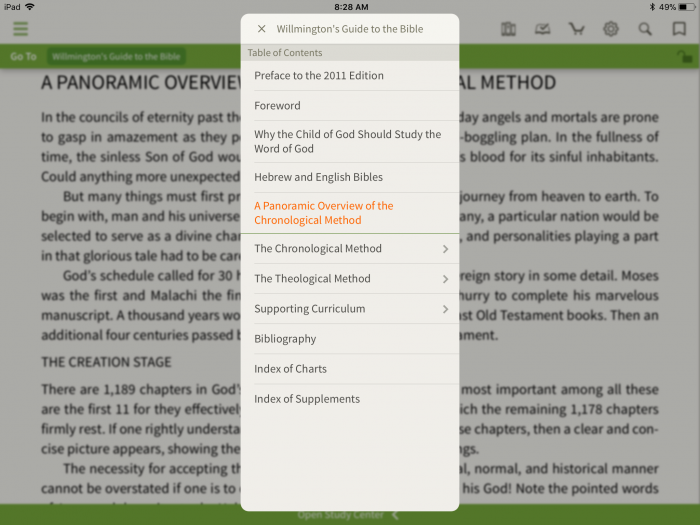
From the table of contents you can quickly navigate to any section of the book. This is particularly useful if you know exactly what you’re looking for and want to get there quickly. Or, for those things that may not show up in the Resource Guide—like all of the cool information found under “A Panoramic Overview of the Chronological Method,” such as a list of the 101 most important chapters in the Bible or a list of the Bible’s important events. It is also a useful way to browse the resource to see what nuggets of information are waiting for you.
RESOURCE GUIDE
The best way to make use of Willmington’s Guide to the Bible, like so many of our titles, is through the Resource Guide. The Resource Guide pulls in information from your entire library based on the passage you’re currently studying. Then, all the information you need in Willmington’s is always right at your fingertips.
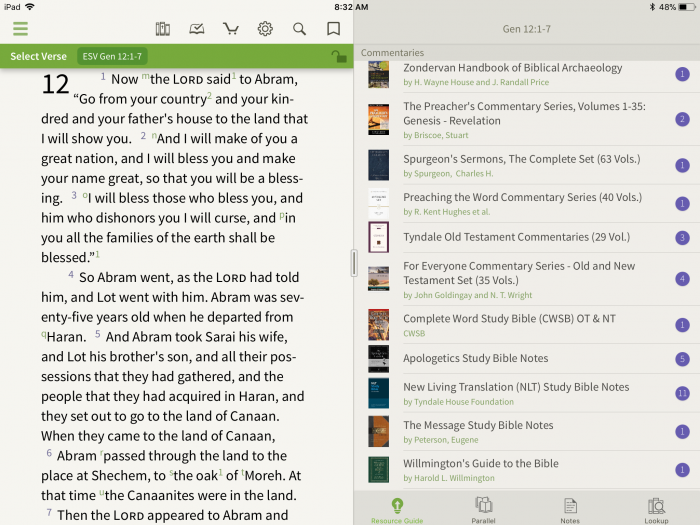
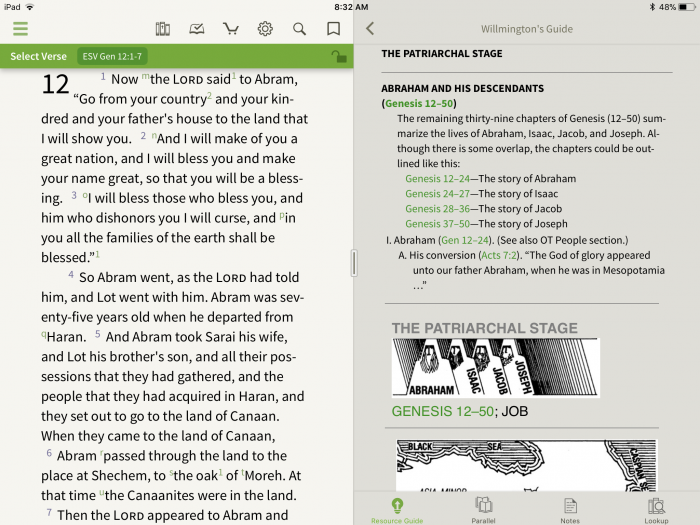
As you can see in the example above, we’re studying Genesis 12. Then, in the commentaries section, Willmington’s shows us the information for this Patriarchal Stage of the Bible. It also contains a summary of that portion of Scripture with outlines, maps and more. Now you can get an overview of Abraham’s life while learning how he relates to other biblical characters.
PEOPLE, CHARTS, & MORE
The Resource Guide is also helpful if you’re interested in studying a specific Bible character. Say you’re reading Daniel 6 with the narrative of Daniel in the lion den. You want to read more about King Darius. Simply find Darius under the “People” section and find Willmington’s. Now, at a glance you can see both a chronological overview and basic statistics. With some people, like Daniel, you’ll also get a theological overview.
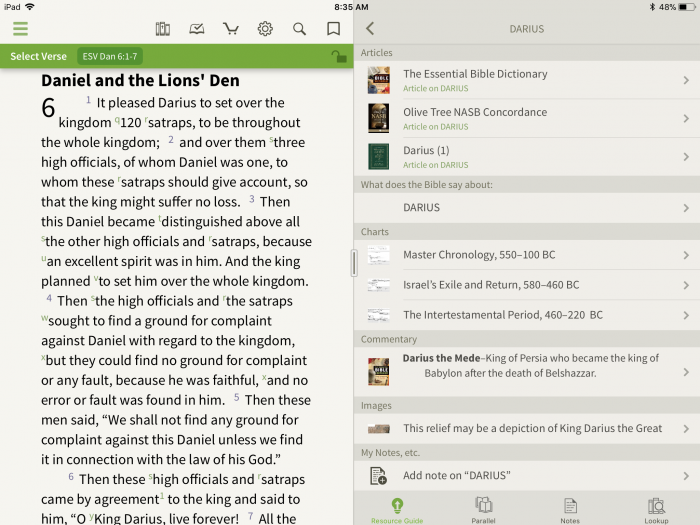
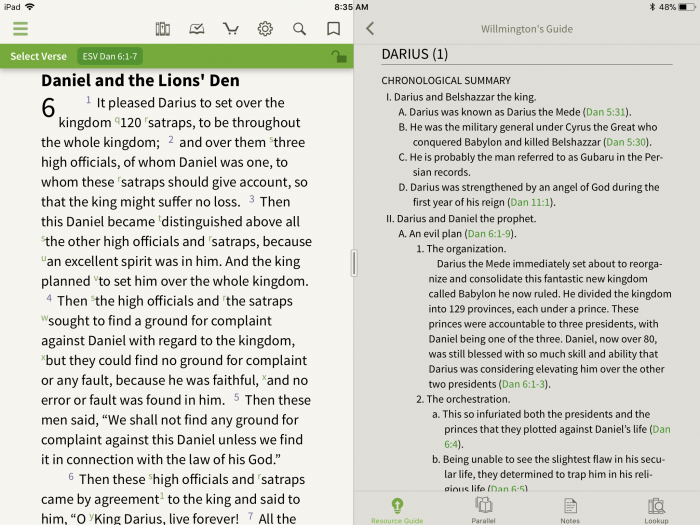
The same is true of maps and charts. Based on your current passage, you will find relevant charts and maps from Willmington’s Guide to the Bible in those sections of the Resource Guide.
QUESTIONS & ANSWERS
Another key benefit to this resource is its question and answer format. For example, take a look at the Theological Method section. Here you will find key areas of study presented as a list of questions, grouped by subject. Take a look under Christian Living. You have questions on prayer, spiritual gifts, the fruit of the Spirit, etc. Then, each question is answered with concise and relevant Bible passages. These are great for young Christians as well as Sunday School teachers preparing a lesson for Sunday morning.
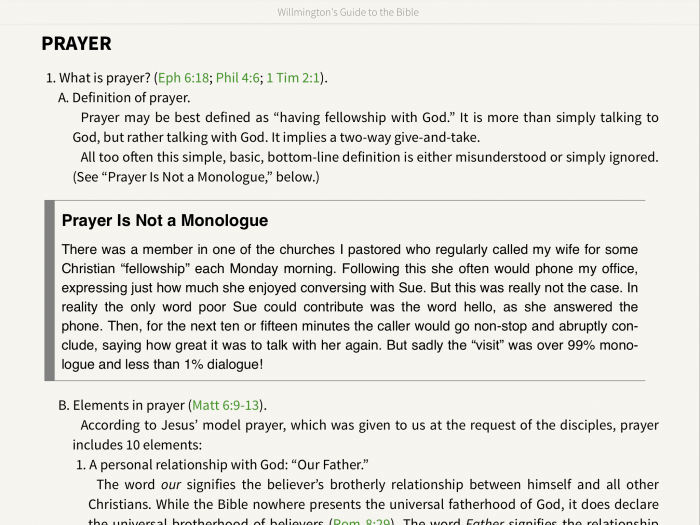
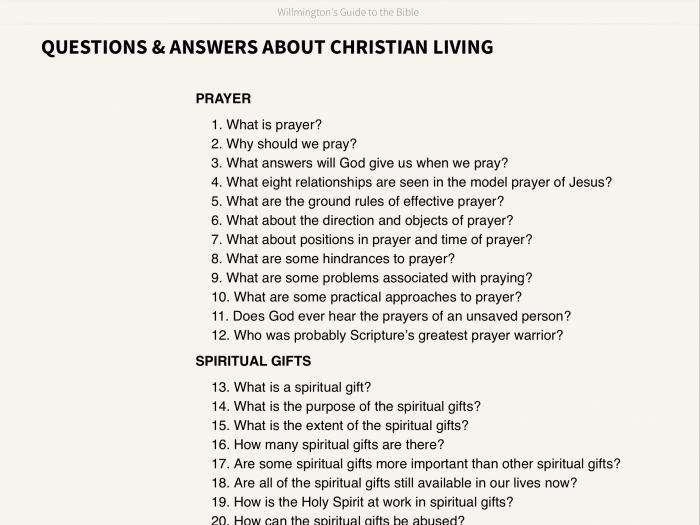


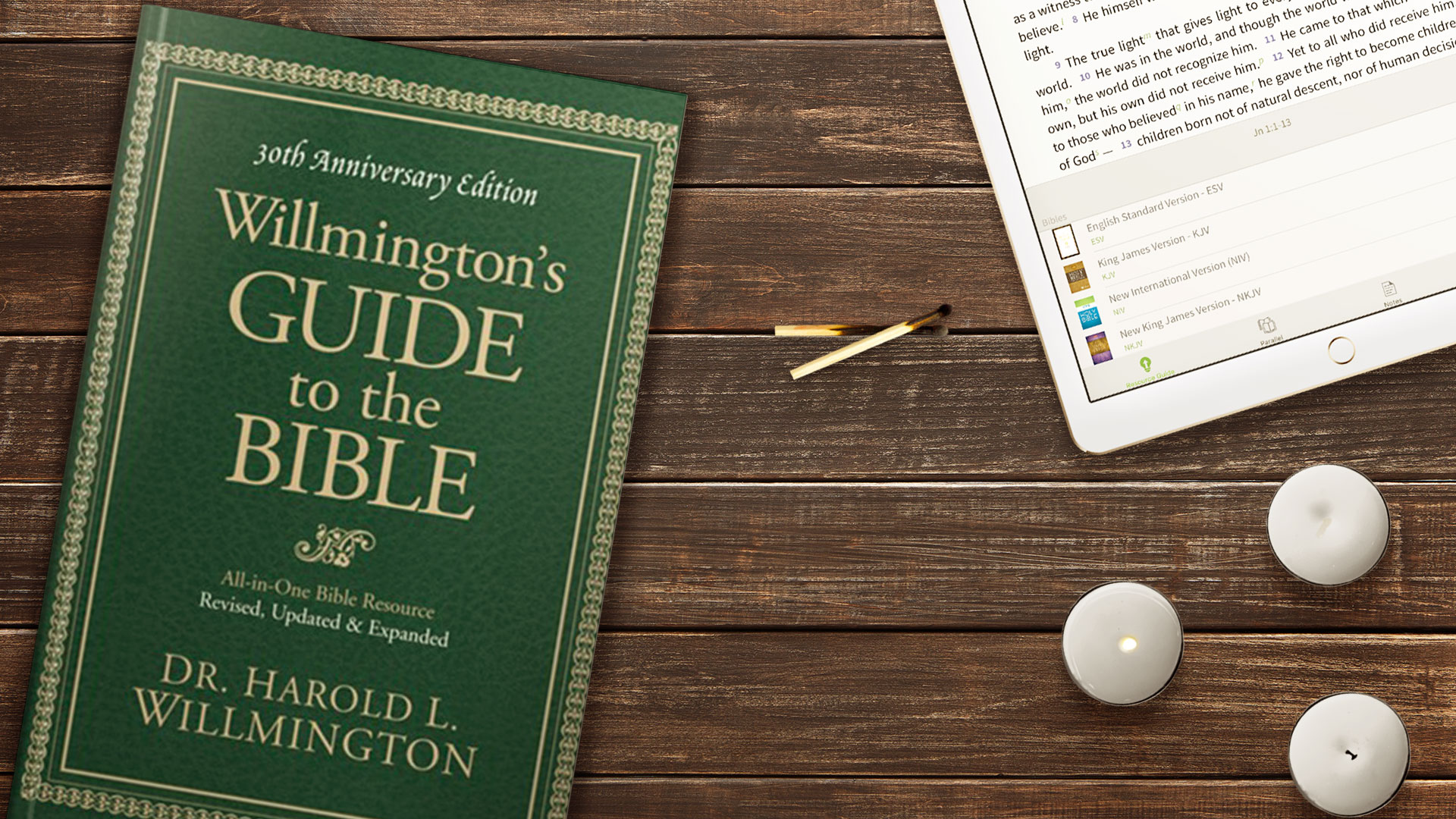

0 Comments